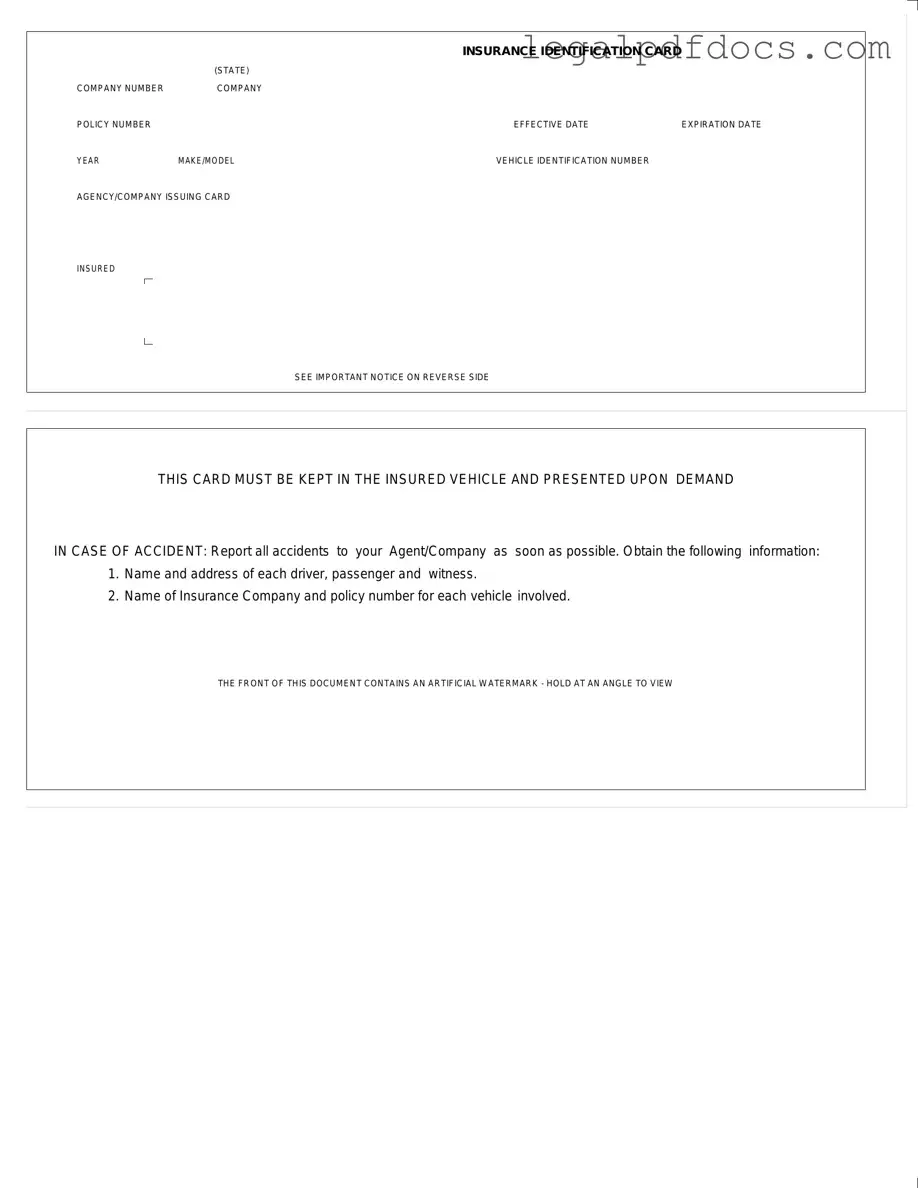When you own a vehicle, having an Auto Insurance Card is not just a legal requirement; it is a vital document that provides proof of your insurance coverage. This card includes essential information such as the insurance company name, policy number, and effective and expiration dates, ensuring that you are protected while on the road. Additionally, it lists the make and model of your vehicle along with its Vehicle Identification Number (VIN), which helps to identify your specific car. The card is issued by your insurance agency and must be kept in the vehicle at all times. In the unfortunate event of an accident, this card serves as a crucial resource, as it needs to be presented upon request. It is also important to report any accidents to your insurance agent or company promptly, gathering necessary details such as the names and addresses of all drivers, passengers, and witnesses involved. Furthermore, the card features an artificial watermark for security purposes, which can be viewed clearly when held at an angle. Familiarizing yourself with the Auto Insurance Card form and its components can significantly ease the stress of managing your insurance needs and navigating any potential accidents.
